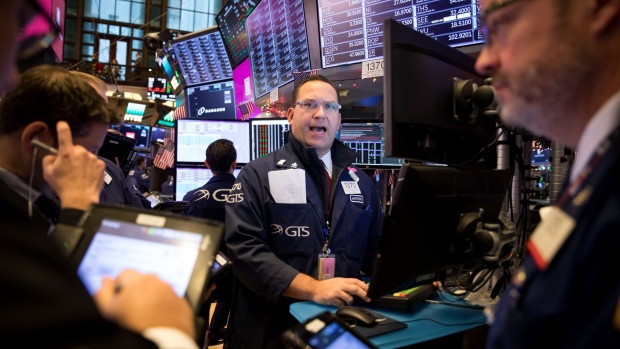Feb 12, 2024
Six Years After Volmageddon, Volatility Fears Resurface in US Stocks
, Bloomberg News

(Bloomberg) -- Six years after a famous blowup in the volatility market shattered a lengthy calm in US stocks, the latest Bloomberg Markets Live Pulse survey reveals growing Wall Street concern over a new boom in trades that bet against equity turbulence.
In this latest era of prolonged stock-market serenity, billions of dollars are pouring into strategies that seek to juice returns by selling options.
These so-called short-volatility trades are a dangerous way to generate income, according to 71% of 377 MLIV Pulse respondents. Some 59% fear the current boom is a possible threat to the market. Even among those who said they use short-vol strategies, more than half consider it a hazardous way to boost returns.
The worries may have their roots in the events of February 2018, when a downturn in the S&P 500 set off a surge in the Cboe Volatility Index, a measure of expected swings in the benchmark equity gauge otherwise known as the VIX.
The episode, which was dubbed “Volmageddon,” wiped out billions of dollars in trades betting against volatility that had built up during a years-long period of relative calm. Most famously, the VelocityShares Daily Inverse VIX Short-Term note (ticker XIV) shrank from $1.9 billion in assets to $63 million in a single session.
Read more: The Day The Vix Doubled: Tales of ‘Volmageddon’
Today, such VIX-linked products are a shadow of their former selves. But the short-vol trade lives on via a host of channels, often utilizing derivatives strategies whose performance hinges on placid stocks. Options-selling funds have seen their assets double to $192 billion from four years ago, according to data compiled by Nomura Securities International.
“Our concern with these types of strategies is that investors often gravitate to them because of their attractive yield without fully understanding or appreciating what is driving that yield,” said Adam Phillips, a portfolio manager at EP Wealth Advisors. “Investors who mistake these funds as pure-plays on an asset class could be setting themselves up for disappointment.”
To be sure, today’s dynamic in the short-vol space is much different from 2018, when wagers were more leveraged and vulnerable to a sudden market drawdown. Rather than taking a direct bet that equity tranquility will prevail, the most-popular short-vol trade now involves call write or covered calls. Such strategies are typically intended to cushion losses while giving up on some upside.
“Selling calls does suppress implied volatility of course, but there’s no systemic risk,” said Charlie McElligott, Nomura’s cross-asset strategist. “The market doesn’t currently possess the proper positioning dynamics to allow for ‘crash-down’ conditions.”
Read more: Former AQR Quant Warns of ‘Grave Error’ Chasing Options Income
The short-vol complex has expanded as the VIX — also called Wall Street’s fear gauge — has ground lower toward levels last seen before the pandemic struck. With the S&P 500 printing all-time highs and US economic data surprising to the upside, it’s currently trading near 13, compared with an average of 17 last year and about 20 over the course of its more than three-decade history.
MLIV Pulse respondents don’t see much potential for it to get lower in an environment of elevated stock valuations, lingering inflation and fragile geopolitics. Half of those completing the poll reckoned the VIX will average close to 20 or above this year, and 45% said close to 15.
Since the VIX often moves inversely to the S&P 500, those answers strongly imply a coming stock-market decline.
MLIV Pulse contributors — who are predominantly in the US or Europe — were split over the best way to guard against that scenario. Perhaps unsurprisingly, half of those who dabble in short-vol trades favored using derivatives strategies like buying S&P 500 puts or VIX calls to hedge a downturn. Treasuries were the preferred option for their peers.
RBC Capital Markets derivatives strategist Amy Wu Silverman has a simple message for anyone buying options as a hedge against potential share losses: Good luck.
“2022 was a total fail for option protection strategies. 2023 was a do-nothing market — no option strategy really outperformed,” she said. “Of course everyone can remember 2008 or 2018, but there were many calm years in between. And the market simply can’t sell off if we keep seeing exuberance in tech.”
The MLIV Pulse survey is conducted weekly among Bloomberg readers on the terminal and online by Bloomberg’s Markets Live team, which also runs the MLIV blog. This week, the survey looks at impact of obesity drugs like Ozempic across financial markets. Share your views here.
©2024 Bloomberg L.P.





